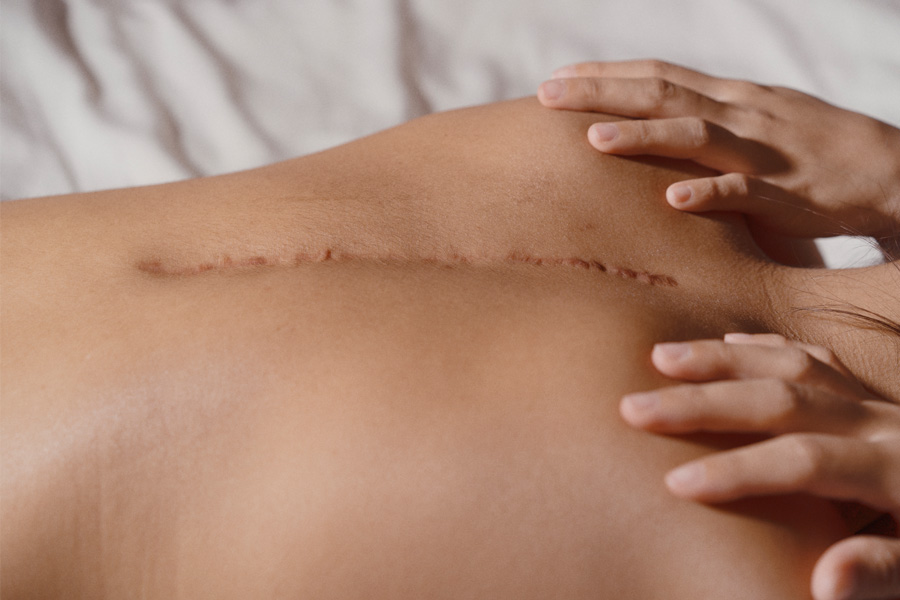
Recipient of the 4th Objectifs Documentary Award
Emerging Category
rules for photographing a scoliotic patient
Featuring works by Woong Soak Teng (Singapore)
Mentored by Hannah Reyes Morales
rules for photographing a scoliotic patient is Soak Teng’s first solo exhibition. The work first developed with the artist’s personal experience with scoliosis and an encounter with medical archives. This grew into collaborations with other individuals, which yielded intimate portraits and interviews about treating and living with scoliosis.
Through found images, text and video works, the project parses the role of image-making in medicine and in sharing lived experience. It is an attempt to make sense of living with and the treatment of the abnormal curvature of the spine.
Exhibition Information
Resources
About the Artist
Woong Soak Teng (b. 1994, Singapore) practices in the intersections of art making, producing, and project managing. Her personal projects examine human tendencies to control natural phenomena and nature at large. Current research interests include the human experience of living with spinal deformity and the role of image-making and representations of human bodies in the medical field. She forms one-third of the art collective, DASSAD.
Soak graduated with a Bachelor of Fine Arts in Photography and Digital Imaging at the Nanyang Technological University, School of Art, Design and Media. She has participated in festivals and exhibitions internationally in Auckland, Copenhagen, Dali, Greece, Tokyo, Shanghai and Singapore. Her accolades include the Steidl Book Award Asia, Objectifs Documentary Award 2021, Kwek Leng Joo Prize of Excellence in Photography 2018 and Singapore Young Photographer Award 2018.
About the Mentor
Hannah Reyes Morales is a photographer whose work documents tenderness amidst adversity. Her photography, both visceral and intimate, takes a look at how resilience is embodied in daily life.
Through her photography she has reported on forced marriages in Cambodia, and has explored the long term effects of colonisation on women’s bodies in the Philippines. She has photographed the toll of Rodrigo Duterte’s war on drugs, and documented the Filipino Diaspora and the effects of migration on the island nation where she is from. She spent the last two years looking at lullabies and night time rituals in high harm environments across the world.
She contributes work to The New York Times, The Washington Post, and National Geographic Magazine, among others.
The World Economic Forum named her a cultural leader in their ASEAN forum. In 2019 she participated in the World Press Photo’s Joop Swart Masterclass and received the Tim Hetherington Visionary Award. She received the ICP Infinity Award for Documentary Practice and Visual Journalism in 2020.
Hannah is currently working on longer term projects, focused on safer space making and caregiving. She is a 2020 National Geographic Explorer.
